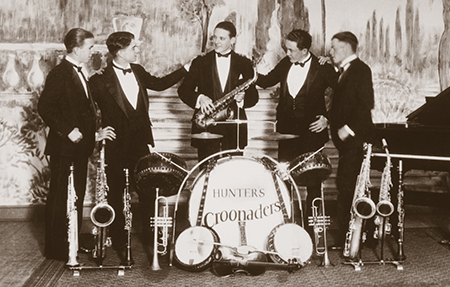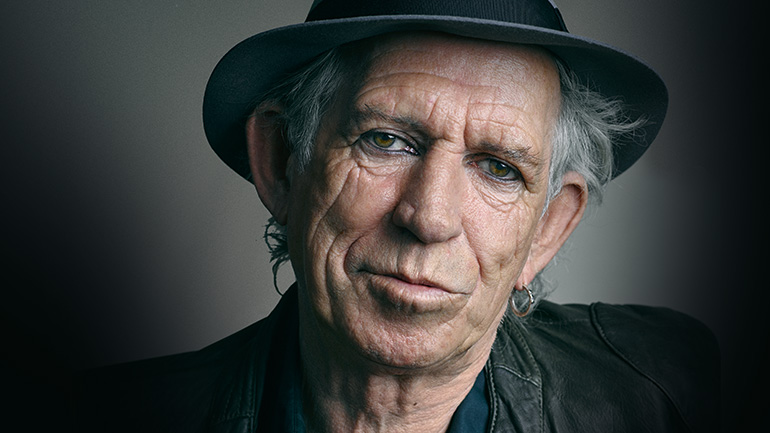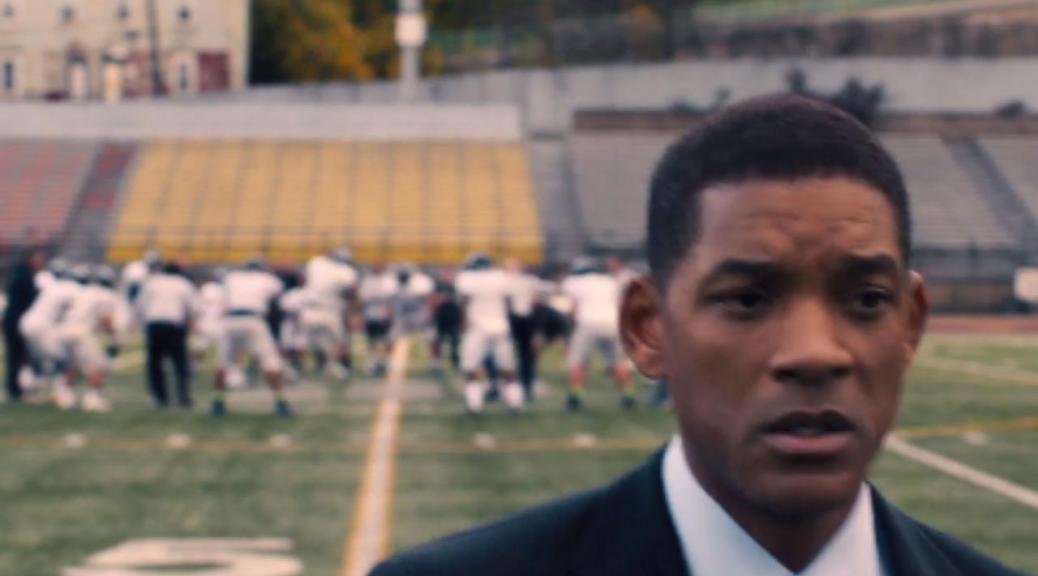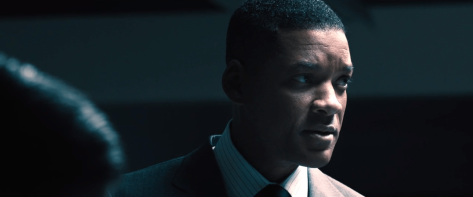
Rapper and poet Kendrick Lamar gathered a stunning 11 Grammy nominations, including Album of the Year and Best Rap Album. The New York Times called Lamar “a rapper with a conscience. Race, poverty, fame, lust, cultural heritage, the direction of America and the trajectory of his career are all on his mind.” Lamar blends funk, spoken word poetry and jazz in what the late David Bowie called the “musician’s pallet.” The music uses rhymes, metaphors, and double-entendres. NY Times Magazine Writer Pharrell Williams likens Lamar to the Bob Dylan of our time. ‘He’s a singer-songwriter. You can just see the kid’s mind like a kaleidoscope over a beat.’
According to Atlantic writer Spencer Kornhaber, “Lamar has long rapped about loving yourself in a culture that degrades you, but he’s exploring that theme more and more lately, it seems.” Lamar’s work is therapeutic as he resists the self-hatred that ensues from a lingering bigotry, much of it going unnoticed by others. The work itself is a means of working through one’s emotions. In Interview Magazine, he says, “Since day one, since the first time I touched the pen, I wanted to be the best at what I do. So I’m just taking it one day at a time.”
Mathangi Maya Arulpragasam (M.I.A.) blends visual art, music, and a moral plea in her new video, “Borders.”

M.I.A. stresses the virtue of receiving refugees with love and sustenance. A Sri Lankan refugee herself, she lives in England where her work has earned two Grammys and an Academy Award. “Borders” challenges political leaders to act now and features the distraught features of actual refugees. In a recent NPR interview, she asks, “If the West is so deliberate in promoting its brands and using art and culture to inspire people’s dreams, how can the West then turn people away?” Her message resonates with some members of the LDS community as they reflect on Matthew 25:35: “For I was hungry and you gave me something to eat, I was thirsty and you gave me something to drink, I was a stranger and you invited me in…”

Icons of Abstract Expressionist Mark Rothko have gained popularity as spiritual icons across religious denominations

According to Florence Waters in the Guardian, the rectangles of color in Mark Rothko’s art is moving into the sacred domain. “These subtly spiritual works, when properly lit, are thought to offer a similar lofty experience that one gets in a place of worship, like a cathedral. Only their refusal to associate with language, or any period in art history, mean they transcend the specificity of religion,” she said. James Breslin, author of “Mark Rothko: A Biography” states that the artist intended his horizontal layers of color to provide images for quiet contemplation by anyone regardless of religious affiliation.
 With the growing influence of the Rothko chapel, new galleries, shows, and available prints on the Internet, Rothko’s images may some day be universally religious. Few icons represent spirituality in an unbiased sense. Opened in 1971, the Rothko Chapel in Houston, TX is now a community center that supports humanitarian causes. Visitors meditate on the 14 Rothko paintings that do not bear resemblance to institutional religious icons.
With the growing influence of the Rothko chapel, new galleries, shows, and available prints on the Internet, Rothko’s images may some day be universally religious. Few icons represent spirituality in an unbiased sense. Opened in 1971, the Rothko Chapel in Houston, TX is now a community center that supports humanitarian causes. Visitors meditate on the 14 Rothko paintings that do not bear resemblance to institutional religious icons.
The LDS chapel foyer of tomorrow?
Our choice of “Best Korean Drama” of 2015: “Kill Me, Heal Me”

Korean dramas are in over 90 countries, and are increasingly popular among LDS viewers. In Kill Me, Heal Me, businessman Cha Do Hyun (Ji Sung) is afflicted with multiple personality disorder: seven to be exact. Keeping them all straight while maintaining a romantic relationship with his psychiatrist Oh Ri Jin (Hwang Jung Eum) as well as staying ahead of his curious brother, makes for a well crafted award-winning comedy-melodrama. The seven personalities teach audience members how to deal with anger, guilt, sadness, and other challenges. Korean dramas are unique in their quick pacing, multiple subplots, and several secondary characters. Through the Korean Wave, streaming is available with English subtitles.

Media “No-No’s” at BYU: Notable Bleeping and Editing. Deciding what constitutes appropriate art and entertainment at a religious university can be dicey business. The following come from friends and colleagues. According to Michael Hick’s book, Mormons and Music, the Duke Ellington Band was not permitted to perform on campus in 1949, despite student pleas. In 1976, a group of students protested a concert by international rock recording artist Neil Diamond because his hair length violated “university standards.”
With strong opinions on both sides, perhaps the most moral film ever made, Schindler’s List was not shown at the university’s Varsity Theater due to its “R” rating. A showing of Rodin’s famous statue, “The Kiss” was cancelled in 1997 because of the issue of nudity.
In the script of the play, Gadianton, the word, “boobs” is stated in a scene by a Young Women’s organization leader in exhorting her girls to be chaste. BYU officials insisted that the word, “bazooms” be used instead.
“Neil, Say it isn’t so!”

After 37 years of marriage, singer-songwriter Neil Young and wife Pegi are now divorced. She was a server at a cafe when they met; he ordered just to see her float across the floor. Neil said often that his foundation was his family. Pegi inspired his songs, “Unknown Legend,” “Once and Angel,” and “Such a Woman.” They raised two children, one with cerebral palsy. Pegi was a background singer on several tours over the year, a devoted partner. Even in the Church, we know that marriages don’t always last. While not knowing the specific circumstances, I thought of this quote by Robert Brault: “Love is not about grand intentions. It is about small attentions.”

President Howard W. Hunter was an inspired Prophet and musician; he loved popular music, particularly jazz. On Sunday, January 3, 2016, a high priest group leader of the Laie, Hawaii Fifth Ward that wished to remain anonymous, said that President Hunter played three Elton John songs, “Rocket Man,” Candle in the Wind,” and “Daniel” on the piano at his home during a visit to Oahu. Then, he treated his guests to a solo jazz performance on the saxophone, according to the group leader. President Hunter was visiting the Polynesian Cultural Center during the mid-1970’s to conduct affairs for the Church.
 Tenth Anniversary of film, New York Doll evokes memories of the rare intersection of Mormonism and popular culture. In the 1970’s, Arthur “Killer” Kane was bass player in one of the most notorious punk rock bands, The New York Dolls, living a life of drinking and drug addiction. When the band dissolved, his life made a turn for the worse; at one point he jumped out of his second-story apartment breaking a leg. Then, he found the Gospel and a spiritual worldview.
Tenth Anniversary of film, New York Doll evokes memories of the rare intersection of Mormonism and popular culture. In the 1970’s, Arthur “Killer” Kane was bass player in one of the most notorious punk rock bands, The New York Dolls, living a life of drinking and drug addiction. When the band dissolved, his life made a turn for the worse; at one point he jumped out of his second-story apartment breaking a leg. Then, he found the Gospel and a spiritual worldview.
Before his death in 2004, Arthur’s home teacher and Bishop made it possible for him to attend a reunion concert of the New York Dolls in London. In a touching scene, Arthur offers a prayer with the band before they go on stage.


Church in Berlin holds Star Wars Mass
A Star Wars religious service was held in Berlin; parishioners donned costumes and priests waved lightsabers to illustrate Biblical tenets. A film clip was played during the service. Attendance was estimated at about 500. Protestant pastor Lucas Ludewig explained that Star Wars draws on religious themes and “that the Bible and the Church are part of our culture.” The theme song was played during the ceremony.

Dolly Parton’s “Coat of Many Colors” Disappoints, but Child Actor Alyvia Alyn Lind Shines. It’s as light as angel food cake on the Christmas table. Unfortunately, the holiday TV special is confection only, no nutrition, not much to mull over except “Don’t stand outside the church during services like Pa.”
Even savvy adolescents will fight back yawns during this maudlin tribute to Dolly’s story of the coat of many colors, a loving gift from her mother that the school kids make fun of. This is surprising since it looks cooler than what the others are wearing. Peculiar is no discernible connection to the Biblical story of Joseph’s coat. If this airs next year, opt for the “The Christmas Story.”
The best line is, “Mountain people music has the sound of angels.” Amen to that!
The Catcher in the Rye by J. D. Salinger still resonates with staff members of the Huffington Post. With the recent ninety-fifth anniversary of the author’s death as well as a new biography, Huff Post writers took time

to reflect on the novel’s influence not only on their teen years, but the present as well. Dominant themes include: (1) You’re not alone in your frustrations, (2) Social niceties aren’t always phony, (3) Excellent writing can transport you, (4) Growing up means channeling your frustrations towards something productive, and (5) Beauty is rare, and worth holding onto. DawnKrenn, blogger with Teen Ink, says that, “The novel is still relevant to America’s youth. It’s their story. It is their museum, and it does not need renovation.”
James Taylor makes history on Austin City Limits with songs from “Before this World,” his first studio album in 13 years.

In addition to a performance of “You can Close your Eyes” with Shawn Colvin, he played well-crafted new material, laying to rest the “oldies-only singer” label. Debut songs treat themes of salvation, regeneration, and moving-on; they held their own next to the old tunes in terms of depth and his familiar rhythm. I was taken aback by both mood and melody of “Angels of Fenway,” and “Today, Today, Today.” The classic, “Fire and Rain” was missing from the set, but I was glad: J.T. has turned the page of a story that continues to amaze.
A self-identified agnostic, Taylor was heavily influenced by Episcopalian hymns in his childhood. His affinity for the populist American folk style is not lost on the new CD that is about to earn his first number one album on the top Billboard 200.
The Metropolitan Museum of Art Draws Lawsuit from New Yorker Claiming Paintings of the White Jesus are Racist and Discriminatory
According to the New York Post, Justen Renel Joseph, 33, filed suit in Manhattan Supreme Court: “I’m suing a public venue which by the Civil Rights Act of 1964 can’t discriminate on a protected basis.”

According to The Post, Joseph struggles to feel the divinity of the Christ given that the depicted child’s complexion does not match his own. This incident reminds me of my good colleague Jorge Schement, Professor of Communication at Rutgers University, who, after a guided tour of the paintings in the Temple Square Visitors Center said, “Thank you for teaching me about Mormonism, especially that Christ was Scandinavian.”
A Good Guy after all? J.K. Rowling Discloses why Harry Potter Named his Son after Snape

For days, Snape haters and lovers have been tweeting their arguments. Rowling chided readers for making Snape a flat, one-dimensional character in a message on Nov 26 tweeted @BeACartoonHeart: “Snape is all grey. You can’t make him a saint: he was vindictive & bullying. You can’t make him a devil: he died to save the wizarding world.” After weighing in several times, Rowling finally retreated from a debate that raged on without her. He could have saved himself, but Snape “died to expiate his own guilt…Snape’s silence ensured Harry’s victory.” Not only was Rowling’s clarification unexpected, but the enduring role of the book in public discourse continues to intrigue critics.
Film Directors say Utah Life a Struggle for Polynesians in Documentary, “In Football We Trust.”Director Erika Cohn said, “Tongans and Samoans are highly misunderstood in Utah, due to an underlying racism.” Responding to questions after the BYU-Hawaii screening of their movie, “In Football We Trust,” Cohn and co-director Tony Vainuku elaborated on the struggle of these groups to feel accepted while preserving their sacred traditions. They elaborated on the complex interplay between football and Polynesian culture, which according to the film, has played out in uneven ways. The screening drew a large crowd November 19 in the university’s McKay Auditorium. The documentary was featured at the Sundance Film Festival earlier this year.
 Donald Sutherland Explains Meaning of The Hunger Games Books and Subsequent Movies
Donald Sutherland Explains Meaning of The Hunger Games Books and Subsequent Movies
In a Nov 28 article in the website The Mind Unleashed, Actor Donald Sutherland who plays the sinister character President Coriolanus Snow in the Hunger Games films, says the following about what the stories mean: “If there’s any question as to what it’s an allegory for I will tell you. It is the powers that be in the United States of America. It’s profiteers. War is for profit. It’s not “to save the world for democracy” or ‘for king and country.’ No, bulls**t. It’s for the profit of the top 10%, and the young people who see this film must recognize that for the future ‘blind faith in their leaders,’ as Bruce Springsteen said, “will get you dead.”
New Book, “Amazing Ourselves to Death,” asks whether Neil Postman’s Classic, “Amusing Ourselves to Death” is Relevant in the Present Information Age
Professor Lance Strate at Fordham University and former student of Neil Postman, author of perhaps the most influential book on the social impacts of television, Amusing Ourselves to Death, puts Postman’s ideas to the test in the new media landscape. Postman’s claim that television lowers vital political discussion to the trivial is put to the test by Strate in Amazing Ourselves to Death along with other ideas such as whether certain media are capable of the sacred and other’s aren’t. Postman’s work drew worldwide reaction when it was published 25 years ago. Tom Brokaw and Yoko Ono had it on their recommended books list, and Roger Walters of Pink Floyd recorded the album Amused to Death inspired by Postman. Elder Dallin Oaks H. Oaks also asked the question, “Are we amusing ourselves to death?” in a conference talk referring to the allure of triviality.
Novel on the Consequences of a Faithless World Stirs Controversy in Europe, Earns Praise from Critics

Michael Houellebecq’s novel, “Submission” is about Francois, a middle aged professor at the Sorbonne; he is aloof and mostly alone with his books. Friends are few, and relationships with the opposite sex fleeting. So salient is his detachment that the novel yields comic elements (i.e., microwaved dinners and binge TV viewing). The larger comment, and the one drawing attention from critics is Houellebecq’s skillful though despairing a society’s lack of faith leading to hollow institutions. Steven Poole writes in the Guardian, “… Submission is, arguably, not primarily about politics at all. The real target of Houellebecq’s satire — as in his previous novels — is the predictably manipulable venality and lustfulness of the modern metropolitan man, intellectual or otherwise.” Francois’s indifference to the world coincides with “…an entire culture’s enormous loss of meaning, its lack of, or highly depleted faith…” according to Karl Ove Knausgaard’s New York Times book review.
Fargo TV Series Turning Heads as Most Compelling Drama about the War between Good and Evil
Based on the Coen brothers’ Oscar-winning film, Fargo the TV series revolves around sinister drifter Lorne Malvo (Billy Bob Thornton) who wreaks havoc on a Minnesota town. The police are on his trail. Superb acting and nuanced writing make it a compelling morality tale. Roth Cornet says in IGN: “Fargo ultimately revealed itself to be a refreshing tale of good versus evil. It’s a rare thing to find a story this rich and nuanced that also takes a definitive stance about the nature of morality.” The show is in its second season after winning a Peabody, Golden Globe, and several Emmys.



 Years have passed, but in this book, she’s eager to self disclose. The backstory of her repertoire is teased out, enhancing the listening experience and enjoyment. She carries a backpack of sadness since the James Taylor days, but is a bright figure. How much is a facade. James Taylor hasn’t spoken to her since 1983. “That’s the Way I Always Heard it Should Be” is ever more relevant in her life than her parents, it seems. “Boys in the Trees” is an ocean of disclosure. Taylor was not faithful in their marriage. Then, she returned the favor for spite. You’re invited backstage almost to the point of uneasiness. If I had written this volume, I would have frantically called my editor crying, “Is it too late to take some things out?” The book is an ocean of disclosure, and a well of comfort to those feeling alone in their worriment.
Years have passed, but in this book, she’s eager to self disclose. The backstory of her repertoire is teased out, enhancing the listening experience and enjoyment. She carries a backpack of sadness since the James Taylor days, but is a bright figure. How much is a facade. James Taylor hasn’t spoken to her since 1983. “That’s the Way I Always Heard it Should Be” is ever more relevant in her life than her parents, it seems. “Boys in the Trees” is an ocean of disclosure. Taylor was not faithful in their marriage. Then, she returned the favor for spite. You’re invited backstage almost to the point of uneasiness. If I had written this volume, I would have frantically called my editor crying, “Is it too late to take some things out?” The book is an ocean of disclosure, and a well of comfort to those feeling alone in their worriment. Wealth was her world: Manhattan apartments and homes in Connecticut and Martha’s Vineyard. She had splendid opportunities, close friends, and interacted with impressive people. Simon attended Sarah Lawrence, and performed with sister Lucy from an early age. Lucy Simon, unknown to many, wrote the score to the Broadway musical, “The Secret Garden.” They were a folk duet in Grenwich Village as teens.
Wealth was her world: Manhattan apartments and homes in Connecticut and Martha’s Vineyard. She had splendid opportunities, close friends, and interacted with impressive people. Simon attended Sarah Lawrence, and performed with sister Lucy from an early age. Lucy Simon, unknown to many, wrote the score to the Broadway musical, “The Secret Garden.” They were a folk duet in Grenwich Village as teens.



 When Nathan inquires, “How do you feel about her?” Caleb is taken aback. Why should he have feelings for an android, and is that even possible at any meaningful level? In past AI movies such as Blade Runner, the human impersonator is uncovered when emotion is inadequately simulated. But, Ava has advanced simulated feelings. She tells Caleb, “You ask circumspect questions about me, but I know nothing about you. That’s not how friendship works.”
When Nathan inquires, “How do you feel about her?” Caleb is taken aback. Why should he have feelings for an android, and is that even possible at any meaningful level? In past AI movies such as Blade Runner, the human impersonator is uncovered when emotion is inadequately simulated. But, Ava has advanced simulated feelings. She tells Caleb, “You ask circumspect questions about me, but I know nothing about you. That’s not how friendship works.” You’re wrong about Nathan: he isn’t your friend. You shouldn’t trust anything he says.” Such disclosures set up action elements in the conclusion, inevitable in much current cinema.
You’re wrong about Nathan: he isn’t your friend. You shouldn’t trust anything he says.” Such disclosures set up action elements in the conclusion, inevitable in much current cinema.
 Amy (
Amy (


 Likewise, not all Mormon pioneers crossed the plains with the best of intentions. According to
Likewise, not all Mormon pioneers crossed the plains with the best of intentions. According to 




 by Danny Stout
by Danny Stout